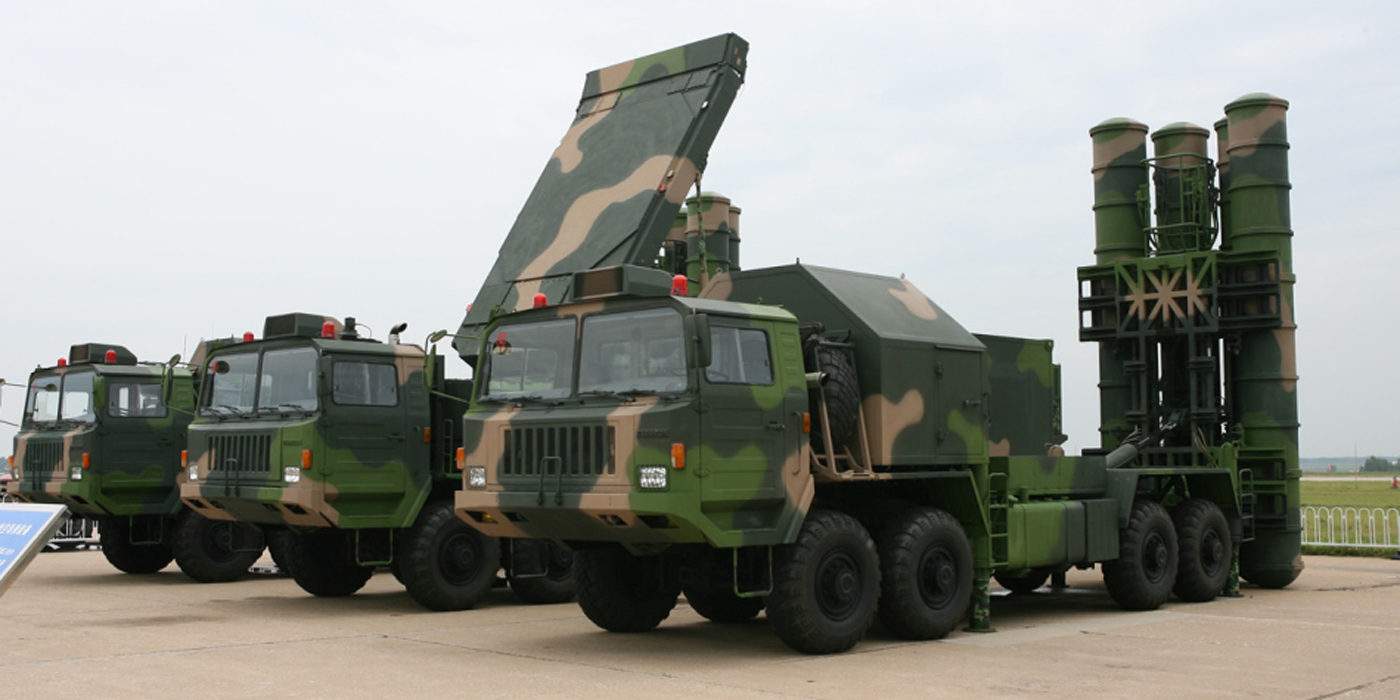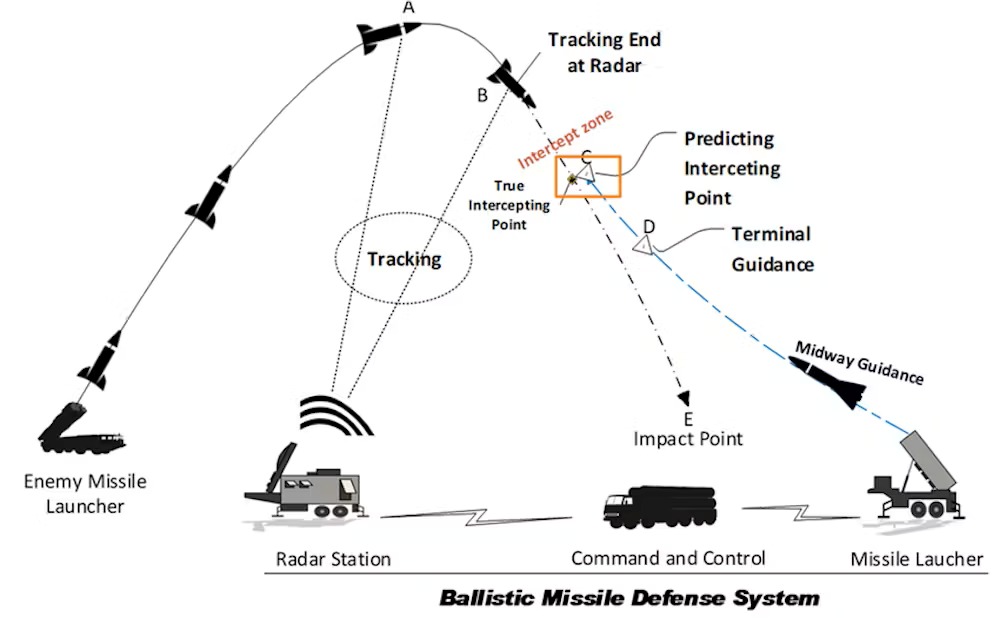The air defence systems, such as missiles, drones and aircraft, are essential in protecting different countries from aerial threats. In the process, the systems detect, track, and engage an incoming threat before it could cause harm.
For example, India used its S-400 potassium advanced air defence system to intercept 8 Pakistani missiles; this air defence system has a detection range of 600 kilometres and a range of engagement of 400 kilometres. It is known to be one of the world's most modern air defence systems.
Now, there are other types of air defence systems in the long, medium, short, and very short range categories. If you were curious about how air defence systems operate, this piece will give you a more comprehensive look into the technology and methods used in defending airspace from threats.
Check Out| Law of War: How Do Wars Begin Between Nations? Understanding the Formal Process
What Are Air Defence Systems and Why Are They Important?

Source: OpIndia
These systems use military technology to detect, track, and destroy airborne threats, such as missiles, drones, and hostile aircraft. Their key objectives are to defend a nation's airspace and vulnerable critical infrastructure.
Types of Air Defence Systems:
- Short-range systems: Protect small areas like cities or military bases (e.g., Iron Dome – up to 70 km range).
- Medium-range systems: Engage threats from further distances, offering broader coverage (e.g., Patriot system – up to 160 km range).
- Long-range systems: Intercept high-speed, long-distance targets (e.g., S-400 – up to 400 km range).
| Type | Typical Range | Description |
| Very Short-Range (VSHORAD) | 0 – 6 km | Used for immediate, close-range threats. Operated by soldiers or mounted on vehicles. Example: MANPADS like Stinger. |
| Short-Range (SHORAD) | 6 – 30 km | Designed to intercept low-flying aircraft, drones, and short-range missiles. Example: Iron Dome (up to 70 km in newer versions). |
| Medium-Range | 30 – 100 km | Provides broader protection against aircraft and cruise missiles. Example: NASAMS, some variants of the Patriot system. |
| Long-Range | 100 – 400+ km | Defends against high-altitude, long-distance threats like ballistic missiles. Example: S-400 (up to 400 km), THAAD (up to 200 km). |
Why They Are Important:
- Prevents enemy attacks on population centres and strategic sites.
- Shield civilians from rockets, bombs, and drone strikes.
- Enhances battlefield control and counters surprise aerial attacks.
- With the rising use of missiles and drones, a strong air defence is now essential.
Explore| List of Indian Air Force Stations 2025
How Do Modern Air Defence Systems Work?

Source: The Conversation
When it comes to protecting countries from aerial threats like missiles, drones, and aircraft, air defence systems are absolutely crucial. They use radars to spot these threats and missiles to intercept them. For instance, the Patriot system is equipped with the AN/MPQ-53 radar and PAC-3 missiles.
1. Detection:
- The first step is identifying a potential threat. Powerful radars scan the sky constantly to detect incoming aircraft, missiles, or drones.
- For example, the Patriot system uses the AN/MPQ-53 radar to detect targets over 100 km away.
2. Tracking:
- Once a threat is detected, the system locks on and tracks its speed, altitude, and direction in real time.
- Tracking data is shared with command centres for quick decision-making.
3. Interception:
- If the object is confirmed as a threat, the system launches a missile to destroy it mid-air.
- Interceptor missiles are guided by radar or onboard sensors.
- Example: The Iron Dome fires Tamir interceptors to stop rockets in seconds.
4. Neutralisation:
- The threat is destroyed before it can reach its target. This is known as being “neutralised”.
What Does ‘Neutralised’ Mean in Military Defence?
In military terms, “neutralised” means a threat has been successfully stopped or destroyed so it can no longer cause harm. It doesn't always mean the target is destroyed—it means the threat has been eliminated from the fight.
In Air Defence:
When a system intercepts a missile, drone, or aircraft and prevents it from reaching its target, it is said to be neutralised.
Example: If a missile aimed at a city is intercepted mid-air by the Iron Dome, it is considered neutralised.
Different Forms of Neutralisation:
- Destruction in the air: Blowing up a missile or drone before it hits.
- Disabling: Damaging the target enough that it crashes or changes course.
- Electronic warfare: Jamming or hacking drones to force them to land.
Why It Matters:
Neutralising threats saves lives, protects infrastructure, and prevents panic during conflict. It is a key goal of all air defence operations.
What are the Common Weapons Used by Nations to Stop Aerial Threats?
- Fighter Aircraft (Interceptors): These fast, agile jets are built for air-to-air combat and interception missions. They respond quickly to airborne threats and engage enemy fighters or bombers.
- Example: India’s Dassault Rafale uses beyond-visual-range (BVR) missiles to track and neutralise hostile aircraft.
- Surface-to-Air Missiles (SAMs): SAMs are launched from land or sea to intercept incoming missiles, aircraft, or drones. They form the backbone of many air defence networks.
- Example: The Russian-made S-400 system can target threats up to 400 km away with high accuracy.
- Anti-Aircraft Artillery (AAA): These are high-rate-of-fire guns used to destroy low-flying targets like helicopters and drones, often when missiles are too costly or ineffective.
- Example: India uses the L70 Bofors gun for short-range, low-altitude air defence.
- Combat Drones (UCAVs): Armed drones can detect, pursue, and destroy aerial threats or enemy radar systems. They also gather intelligence in real time.
- Example: India operates armed Heron TP drones for surveillance and strike roles.
- Electronic Warfare (EW) Systems: These systems jam or deceive enemy radars, communications, and navigation. They can neutralise drones and guided weapons without firing a shot.
- Example: India’s DRDO-developed 'Samyukta' system offers electronic countermeasures across a wide range.
| Weapon Type | Purpose | Example |
| Fighter Aircraft (Interceptors) | Engage enemy aircraft in air-to-air combat | Dassault Rafale (India) with BVR missiles |
| Surface-to-Air Missiles (SAMs) | Destroy aircraft, drones, or missiles from the ground/sea | S-400 system (range up to 400 km) |
| Anti-Aircraft Artillery (AAA) | Fire rapidly at low-flying aircraft and drones | L70 Bofors gun (India) |
| Combat Drones (UCAVs) | Track, strike, and neutralise aerial threats and radars | Heron TP (armed drone used by India) |
| Electronic Warfare (EW) Systems | Disrupt enemy radar, drones, and missile guidance systems | Samyukta EW system (India) |
What's Next| Indian Airports Temporarily Closed Until May 10th, Check Complete List Here, after Operation Sindoor
Comments
All Comments (0)
Join the conversation